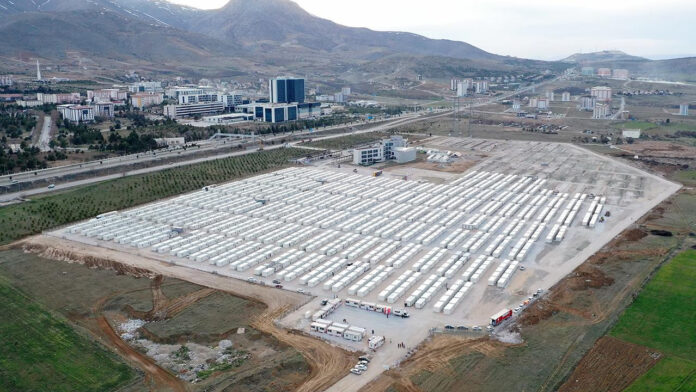As of February 2025, the repercussions of the devastating earthquakes that struck Southeastern Turkey on February 6, 2023, are still palpable. A report by the Disaster and Emergency Management Presidency (AFAD) reveals that a staggering 649,632 people remain in container cities, which were originally established as temporary accommodation solutions. This figure highlights the severity and prolonged aftermath of the natural disaster that claimed thousands of lives and destroyed extensive infrastructure.
The Context of the Earthquakes
The catastrophic earthquakes of February 2023, registering magnitudes of 7.7 and 7.6, primarily impacted provinces such as Hatay, Malatya, Adıyaman, and Maraş. In Hatay alone, the disaster resulted in the loss of 24,147 lives, while 80,323 buildings were reported to have either collapsed or sustained severe damage. The scale of destruction necessitated rapid disaster response efforts, including the establishment of container cities to accommodate the displaced populations.
Current Living Conditions
According to the daily publication BirGün, AFAD’s recent report sheds light on the ongoing living conditions in these container cities. Hatay stands out with 218,379 residents still seeking shelter in these temporary solutions. This number reflects the community’s struggle to regain stability amidst the wreckage of their former lives.
Other provinces also report significant populations residing in container accommodations: 112,726 people in Malatya, 118,204 in Adıyaman, and 107,896 in Maraş. These figures exemplify the scale of displacement in the wake of the earthquakes, emphasizing not just the immediate physical destruction, but also the ongoing humanitarian crisis facing the region.
Government Promises and Challenges
In the wake of the disaster, President Recep Tayyip Erdoğan addressed the public during a commemoration program, promising that by the end of the year, a total of 453,000 housing units would be constructed to ensure that “not a single citizen remains without a home or workplace.” However, two years post-earthquake, reports indicate that the government has delivered only 50 percent of the promised housing development for survivors.
The gap between promises and realities severely impacts the lives of those affected. While some progress has been made in the form of new housing developments, many citizens remain in precarious living conditions that do not provide the stability or security they desperately need. This disparity has led to growing frustrations and calls for more substantial governmental efforts to address the pressing needs of earthquake survivors.
The Impact on Mental and Physical Health
The ramifications of continued displacement extend beyond physical shelter. Living in container cities often deteriorates not only the physical living conditions but also contributes to adverse mental health outcomes. The trauma of losing homes, loved ones, and community structures can lead to long-term psychological effects, including anxiety, depression, and post-traumatic stress disorder (PTSD).
The stress of uncertainty, coupled with inadequate facilities and the lack of a sense of normalcy, creates a challenging environment for the displaced families. Health services, education, and essential social amenities remain under strain, further complicating the recovery process for those affected.
Looking Forward
As the community grapples with the lingering effects of the earthquakes, the need for comprehensive, sustainable solutions becomes more pressing. Collaboration among governmental bodies, non-governmental organizations, and community leaders is essential to ensuring that not only homes are rebuilt but that the social fabric of these communities is restored.
In conclusion, the continued existence of container cities in Southeastern Turkey serves as a stark reminder of the challenges faced by earthquake survivors. With hundreds of thousands still displaced, the urgency for effective housing solutions and comprehensive support systems is clearer than ever. The path to recovery is long and fraught with obstacles, but with committed efforts from all sectors of society, hope remains for a brighter future for those affected by this tragedy.














